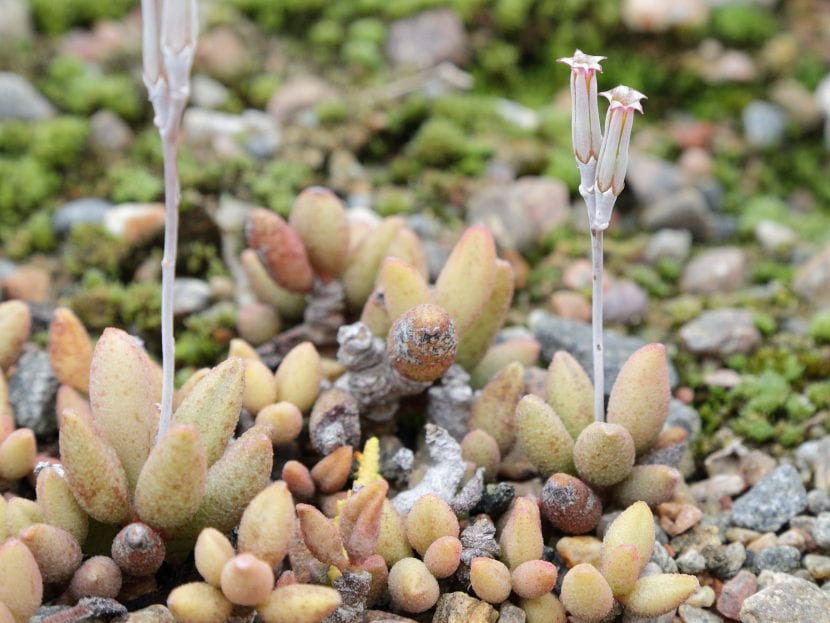
The plants of the genus Adromischus are all small and very pretty, but if there is one that draws the most attention, it is the species Adromischus marianae. It reaches only 15 centimeters in height, so it is important to grow it in a pot so that you do not lose it.
Their care is so simple, that it would be hard to believe. So I better tell you what they are so you can see for yourself 🙂.
Origin and characteristics of Adromischus marianae
Our protagonist is a perennial succulent plant native to Namaqualand (South Africa) where it grows on granite hills. It has a slow growth up to 15cm in height, and It consists of small rough, warty and almost spherical leaves of green or reddish brown color, even purple, about 3,5 cm long. The 12mm long flowers are pinkish green and bloom in spring.
It is a plant that can be had in any corner, since it is so small that it hardly takes up space. Now, like all plants, it too has its own needs.
How do you take care of yourself?

Specimen of Adromischus marianae 'Little Spheroid'
If you are considering acquiring a copy, here is how to take care of it:
- Location:
- Outside: in full sun.
- Indoor: in a very bright room without drafts.
- Substratum: it must have very good drainage. Only washed river sand or pumice can be used.
- Irrigation: scarce. No more than 2 times a week during spring-summer, and every 15-20 days the rest of the year.
- Transplant: it will be enough to do it once the first year I am with you, during the spring.
- Subscriber: it is very important to do it from early spring to late summer / early autumn with specific liquid fertilizers for cacti and succulents, following the instructions specified on the package.
- Multiplication: by seeds in spring, or by leaf cuttings in spring-summer.
- Pests: it does not usually have, but you have to be careful with snails which can be prevented with diatomaceous earth or with these other remedies.
- Rusticity: it is very sensitive to cold. It can withstand temperatures close to 0 degrees, but it will need protection if frost occurs.
Did you know this plant?